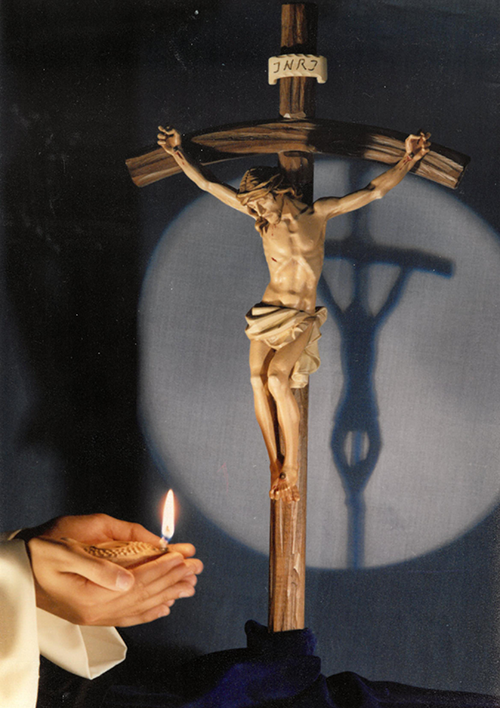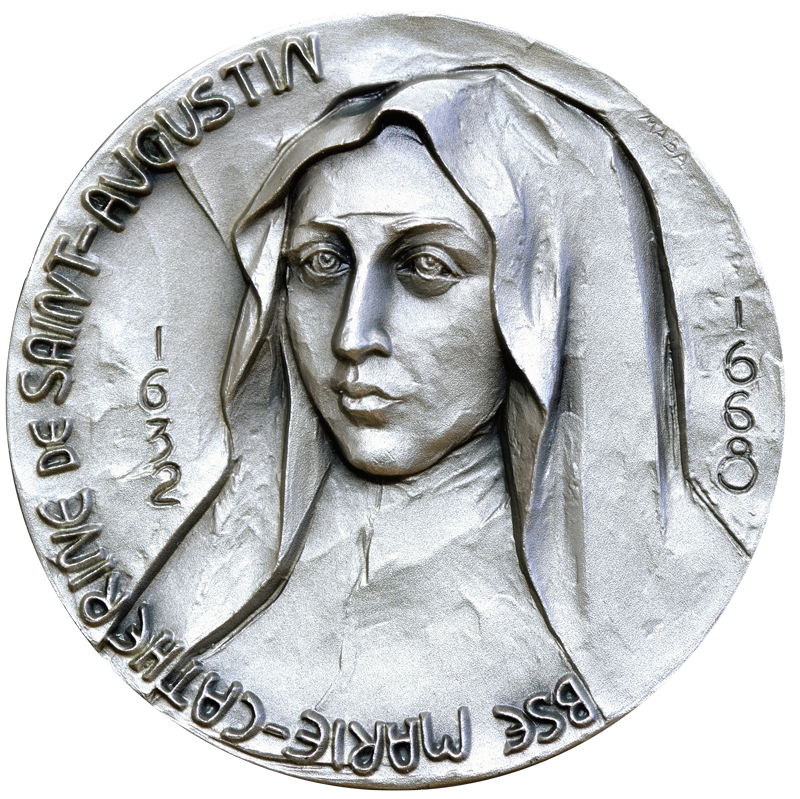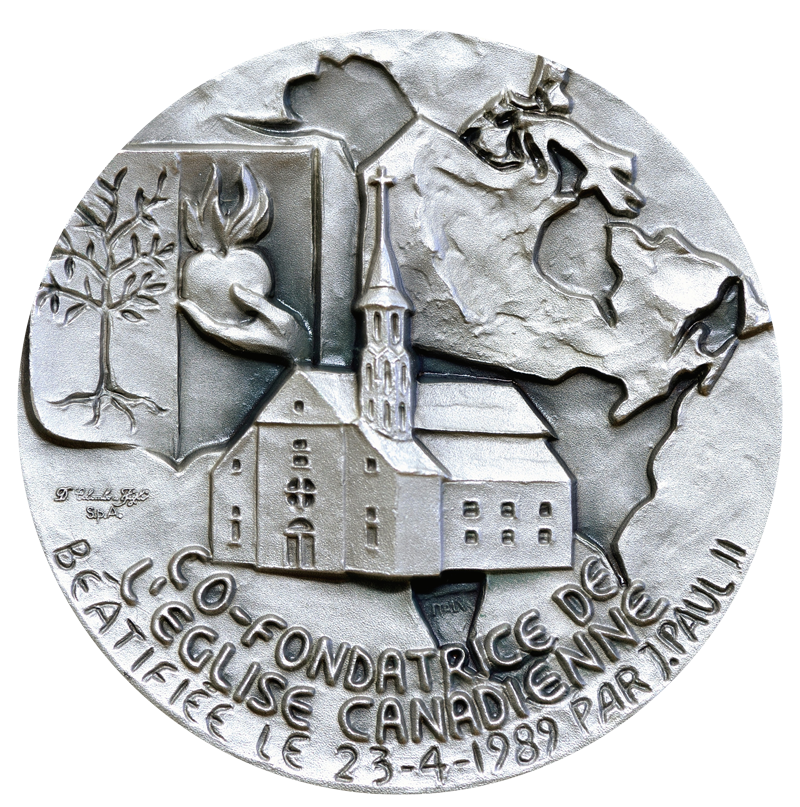Who is
Marie-Catherine-
de-Saint-Augustin?
(1632-1668)
Portrait of a Hospitaller
Coming from Dieppe, Normandy, the first three Augustines Hospitaller Sisters arrived in Canada on August 1st, 1639, to establish a monastery and the first hospital north of Mexico, the Hôtel-Dieu de Québec of the Precious Blood of Jesus. This name was given by the Duchess of Aiguillon, a long-time benefactor of this New France foundation. The hospital work in Canada was already nine years old when Catherine of Saint-Augustin, a young nun, joined the ranks of these pioneers.
Catherine was born on May 3rd, 1632, in Saint-Sauveur-le-Vicomte. Her parents were Françoise de Launay-Jourdan and Jacques Simon, Lord of Longpré. At the age of 12 and a half, she entered the monastery in Bayeux, Normandy, and received the Hospitaller habit on October 24, 1646, taking the name Catherine of Saint-Augustin. On May 4, 1648, at the Church of Notre-Dame-de-Toutes-Joies in Nantes, while en route to Canada, she pronounced her solemn vows under the name Marie-Catherine of Saint-Augustin. After a long and perilous voyage, she arrived on Canadian soil on August 19, 1648.
Her tireless zeal and creative charity in the “land of crosses” lasted twenty years. She passed away on May 8, 1668, renowned for her sanctity. Her simple life concealed a soul graced with extraordinary blessings. Marie-Catherine of Saint-Augustin was mourned by all of New France’s population and is regarded as one of the founders of the Canadian Church.
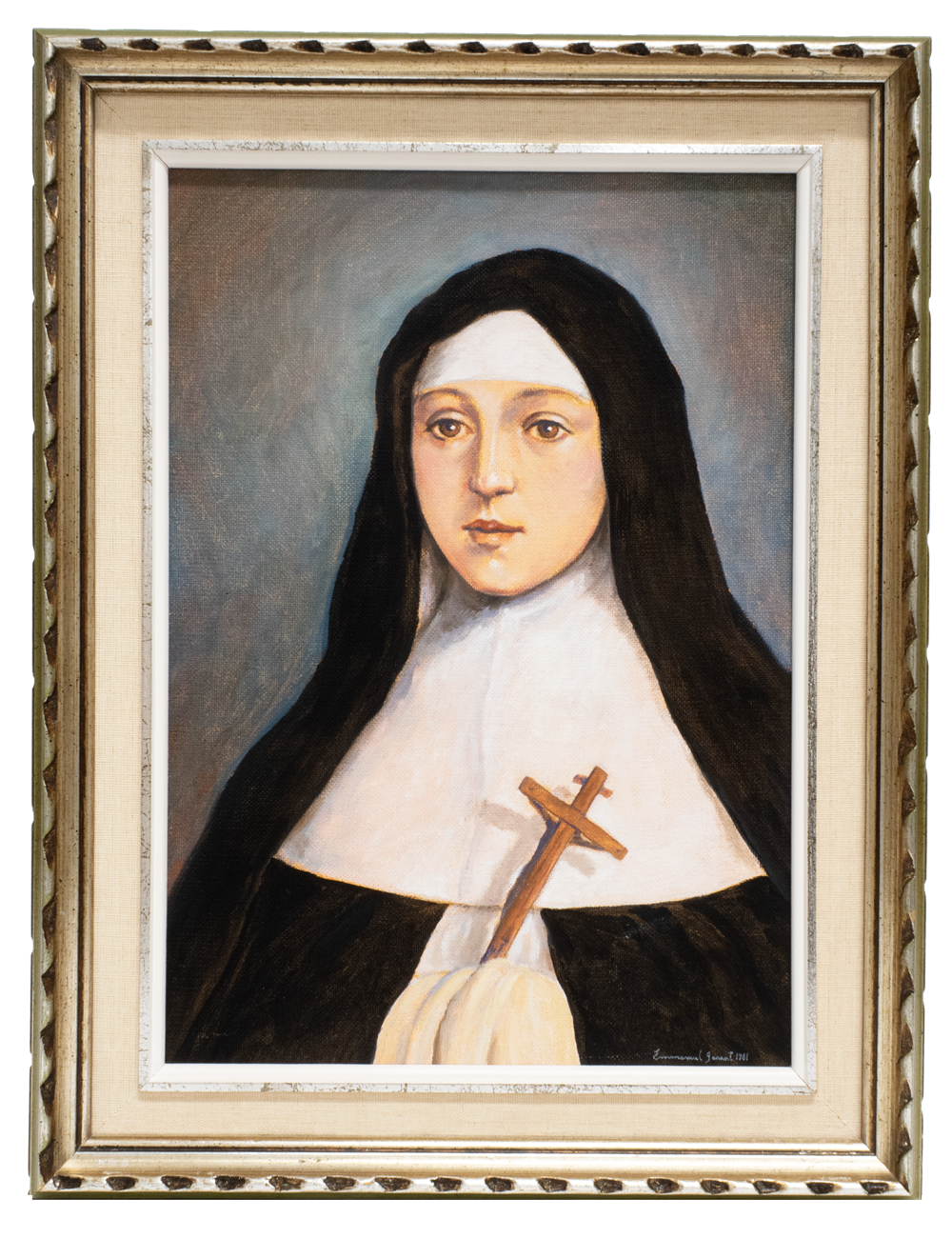
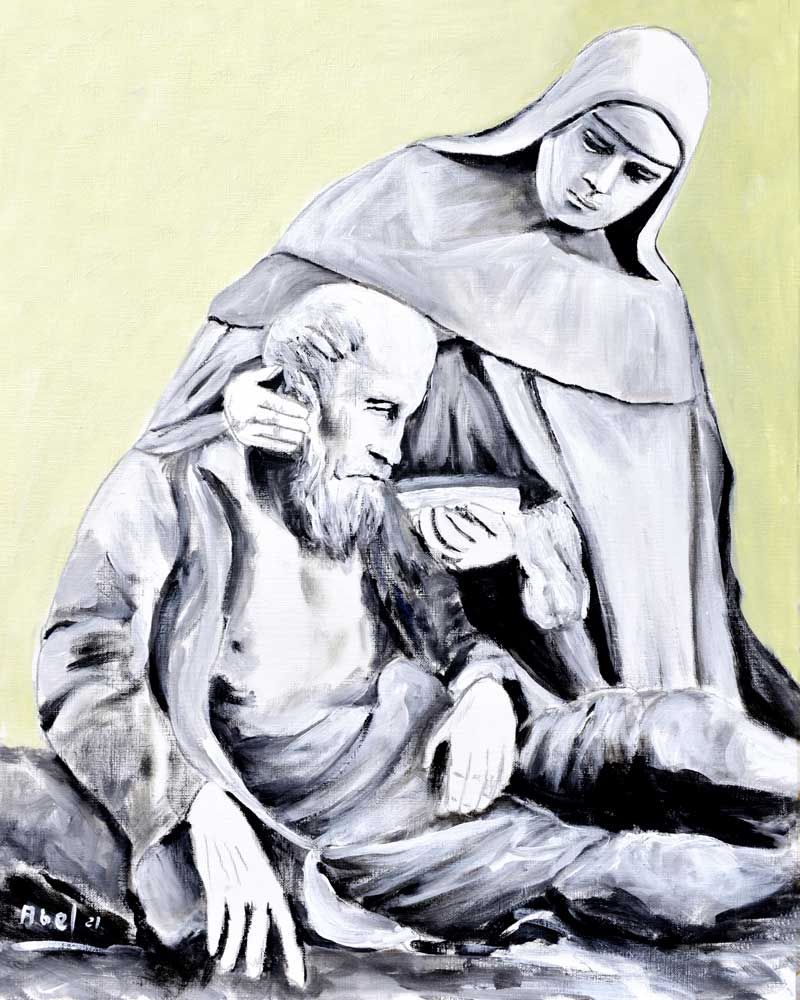
Those who knew her closely described her as serene, open, a bearer of joy, and a strong woman who faced life without fear. Her critical thinking, firmness, and tenderness combined to form a captivating and resourceful personality. She was entrusted with significant responsibilities: serving as the first Hospitaller (hospital director), overseeing the care of the sick and managing the healthcare staff, training novices, and managing finances.
In this land, Marie-Catherine of Saint-Augustin gave herself completely, playing a leading role. She was deeply connected to Canada with every fiber of her being.
Canon Lionel Groulx declared:
"Certainly, all the great souls of her time in the colony, all the founders of the Church in New France, gave their lives for their adopted country. But I know of none who, as much as the Hospitaller of Québec, carried in their spirit the obsessive thought of Canada, who offered their prayers and labors so lovingly to it, or were as solemnly bound to it." Already, upon leaving France, she had vowed to die on Canadian soil, if it was God's will. When the Iroquois threatened to exterminate the colony, she renewed this vow, declaring that even if all the other nuns returned to France, she would remain in Canada to serve the poor and the sick.
Marie-Catherine of Saint-Augustin is a co-founder of the Canadian Church, a Hospitaller from our history, and a heroic figure of charity who belongs to our heritage of sanctity, if one may express it so. Bishop Laval said of her: “She is a masterpiece of the Holy Spirit.” The First Nations of Canada gave her the name Iakonikonriiostha, meaning “She who beautifies the soul.” Under the pontificate of Pope John Paul II, she was declared Venerable on June 9, 1984, and proclaimed Blessed on April 23, 1989.
From an early age, young Catherine was already deeply concerned with seeking God's will. She was profoundly influenced by the lives of her maternal grandparents, who welcomed the sick and destitute into their homes. It was during a visit from Father Malherbe, a Jesuit priest, to this charitable household that Catherine overheard him advising a poor man to offer his illness to someone in even greater need. From that moment, the word offer left a profound mark on her heart.
Thus, when the sisters who had arrived in Québec in 1639 turned to Bayeux in 1648 to request additional sisters for the Canadian mission, Catherine of Saint-Augustin recognized this as a divine call to fulfill God's will. Without hesitation, she offered herself for this mission, which was incredibly challenging in its early days. As her biographer, Jesuit Father Paul Ragueneau, wrote in 1671: "She departed from Bayeux, seeing Canada as the place where Jesus Christ was calling her to be the victim of His holy love."
She once said: “I called her my Holy Virgin, and I never did anything without asking her permission; I told her everything; I sought her advice more simply, with more openness and tenderness than I would have with my mother.”
Around the age of 10 years old, Catherine listened to the teachings of Father Jean Eudes at the church of Saint-Sauveur-le-Vicomte, the very church where she was baptized on the day of her birth. Shortly thereafter, she made her first consecration to the Virgin Mary, offering herself “body and soul” to the Holy Mother of God, taking her as her Queen and Mistress. This Marian dedication was renewed in different words on March 25, 1648, just before departing for her mission in Canada. In this offering, she asked the Virgin Mary to be her Mediatrix.
Catherine is credited with spreading, in our country, the profound devotion to the Immaculate Heart of Mary, an influence undoubtedly rooted in the sermons of Father Jean Eudes.
She received her First Communion on November 1st, 1640, during the Feast of All Saints. This communion instilled in her a deep conviction that the Lord desired her to be holy. This thought remained with her, constantly present in her heart and influencing all her activities. While she longed to achieve holiness, she often cited the difficulties she faced as excuses for not fully embracing this path.
Throughout her life, it is well known that her greatest consolation was praying in the presence of the Blessed Sacrament. She frequently shared her spiritual experiences, often emphasizing that they occurred in the presence of the Blessed Sacrament or while she was in the choir. She candidly recounted an episode during a period of unrest when the sisters were urged to leave the house and seek refuge in a safer location. Catherine chose to stay behind with a few sisters to care for the sick in the small hospital. However, she admitted that her primary intention was to remain near the Blessed Sacrament so that, in the event of imminent danger, she could consume the sacred species (the consecrated hosts).
At the outset, it is significant to recall that Catherine de Longpré was born on May 3rd, 1632, a date celebrated at the time as the Feast of the Invention (or Discovery) of the Holy Cross. In 1960, Pope John XXIII merged this feast with the Exaltation of the Holy Cross, celebrated on September 14, commemorating the dedication of the Basilica of the Holy Sepulchre. While this detail may appear trivial, it already foreshadows the centrality of the Cross in the life of Catherine de Saint-Augustin.
In Catherine de Saint-Augustin's life, everything converges around a unifying axis expressed through her existence as a gift received from God and offered in service to care for both bodies and souls. Her mission was twofold: one of hospital care and another of redemptive communion, following in the footsteps of Christ, who gave His life for the salvation of universal fraternity. From an early age, she learned from her maternal grandparents what it means to give one's life to those one loves, including the destitute. Later, she would dedicate her life entirely to the people of New France, serving them with all her strength. She did not shy away from this calling, driven by an apostolic and missionary zeal that led her to embrace new cultures despite the many challenges she faced. These included the long and perilous transatlantic journey, harsh climates, hunger and thirst, inadequate living conditions, language barriers, epidemics, and the lack of remedies to combat such plagues.
Her life of self-offering was nurtured and fortified by daily personal and communal prayer, as well as the spiritual guidance she received through her director, with whom she shared the depths of her spiritual experiences. Guided by this relationship, she fully embraced her mission of redemptive communion by offering herself to sinners, the souls in purgatory, and everyone entrusted to her care. She fervently desired that every person she treated at the hospital would receive the sacraments of the Church and attain heaven. Today, she would undoubtedly wish for every sick person to experience the merciful tenderness of God before leaving this earth and to find eternal joy in the Kingdom of Heaven.
Members of the First Nations described Catherine de Saint-Augustin as "She who beautifies the soul and the heart warmer; the one who consoles," a sentiment captured in the Huron-Wendat and Algonquin name IAKONIKONRIIOSTHA. This name encapsulates Catherine's mission: to see and hear the suffering of a people, carry it in her offering to the heart of God, and intercede for a liberating action in each person’s heart.
READ MORE...
Bisson, Carmelle, A.M.J. De Marie à l’offrande rédemptrice dans Il suffit d’une foi,
Collectif sous la direction de Thérèse Nadeau-Lacour, Éditions Anne Sigier, 2008, chapitre III, pp. 132-180.
Baillargeon, Gaëtan. Marie-Catherine de Saint-Augustin,
Une vie offerte pour la Nouvelle-France, Éditions Médiaspaul, 2023.
Timeline of key events in her life
1632
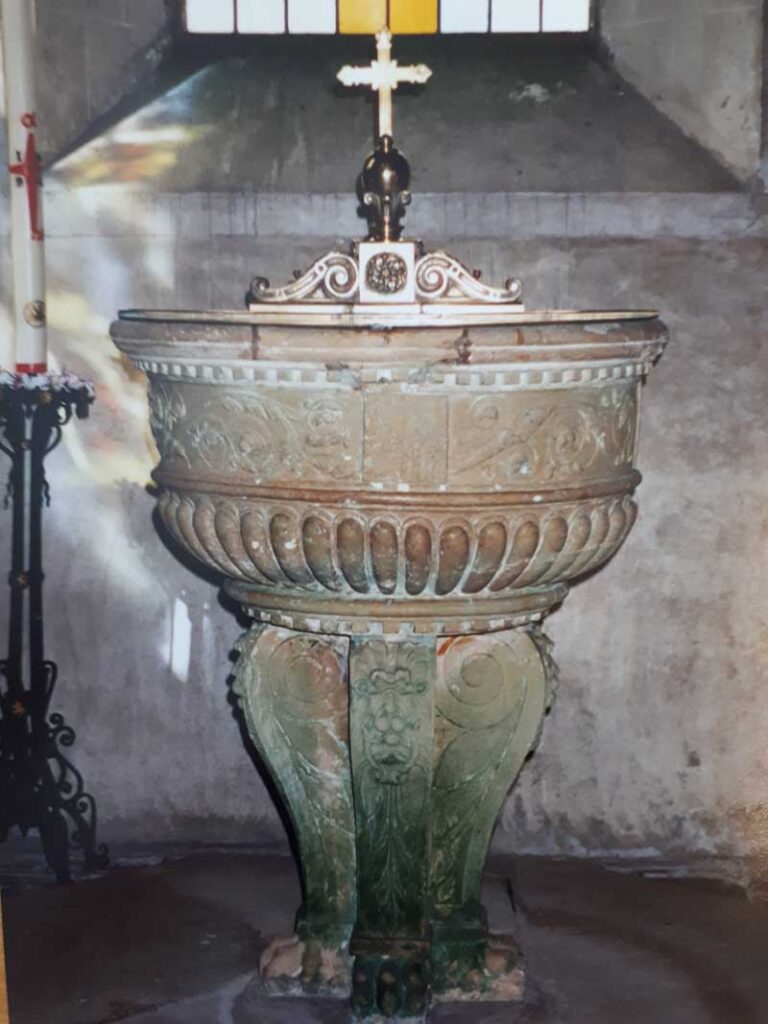
May 3rd: Birth and baptism of Catherine Simon de Longpré at Saint-Sauveur-le-Vicomte, in Normandy, France.
1633
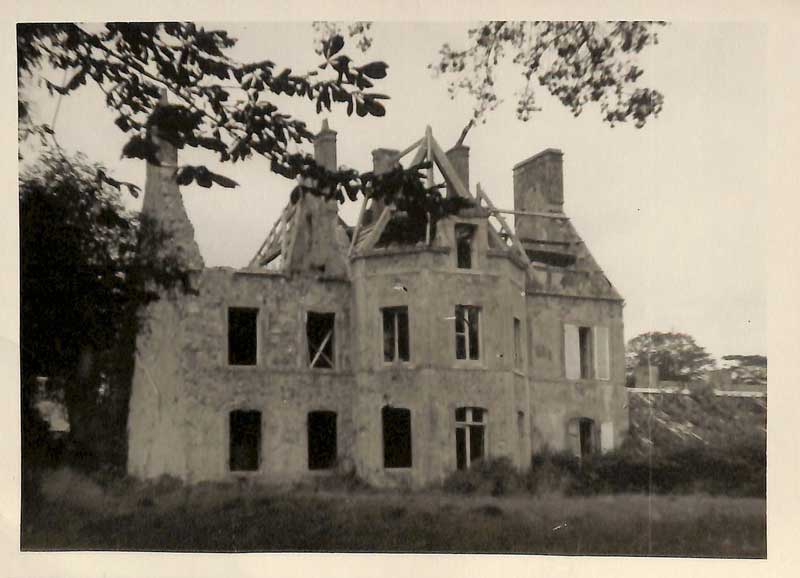
Around this year, she was entrusted to the care of her maternal grandparents.
1639
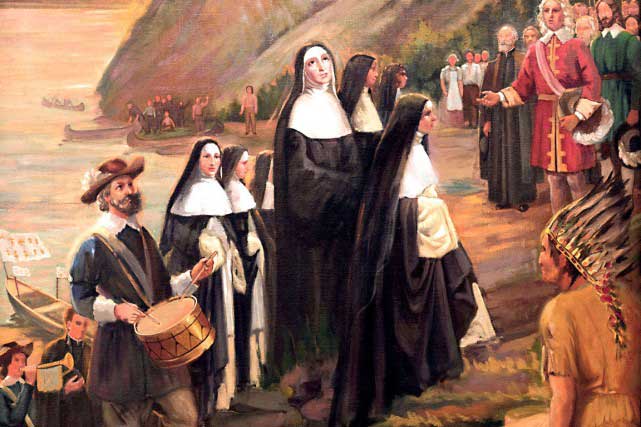
August 1st: Arrival in Quebec of the three founding Mothers of the Monastery and Hôtel-Dieu of Quebec.
1644
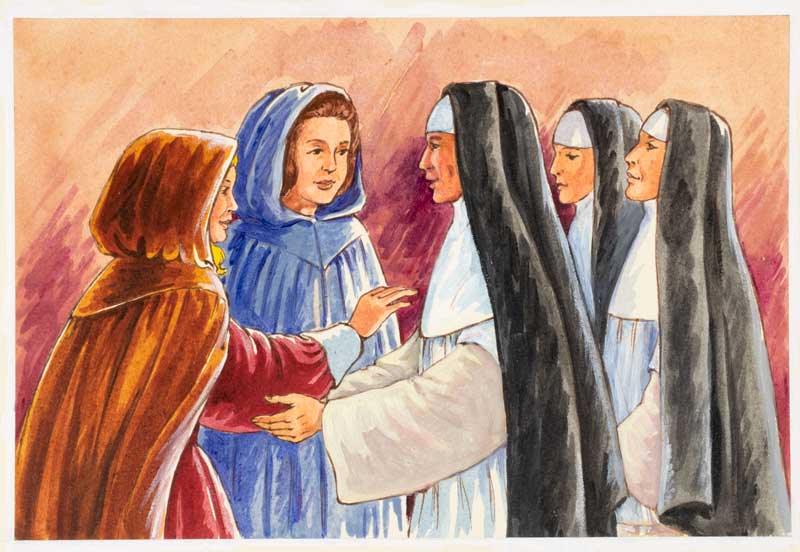
October 7: Entered the Monastery of Bayeux at the age of 12½.
1646
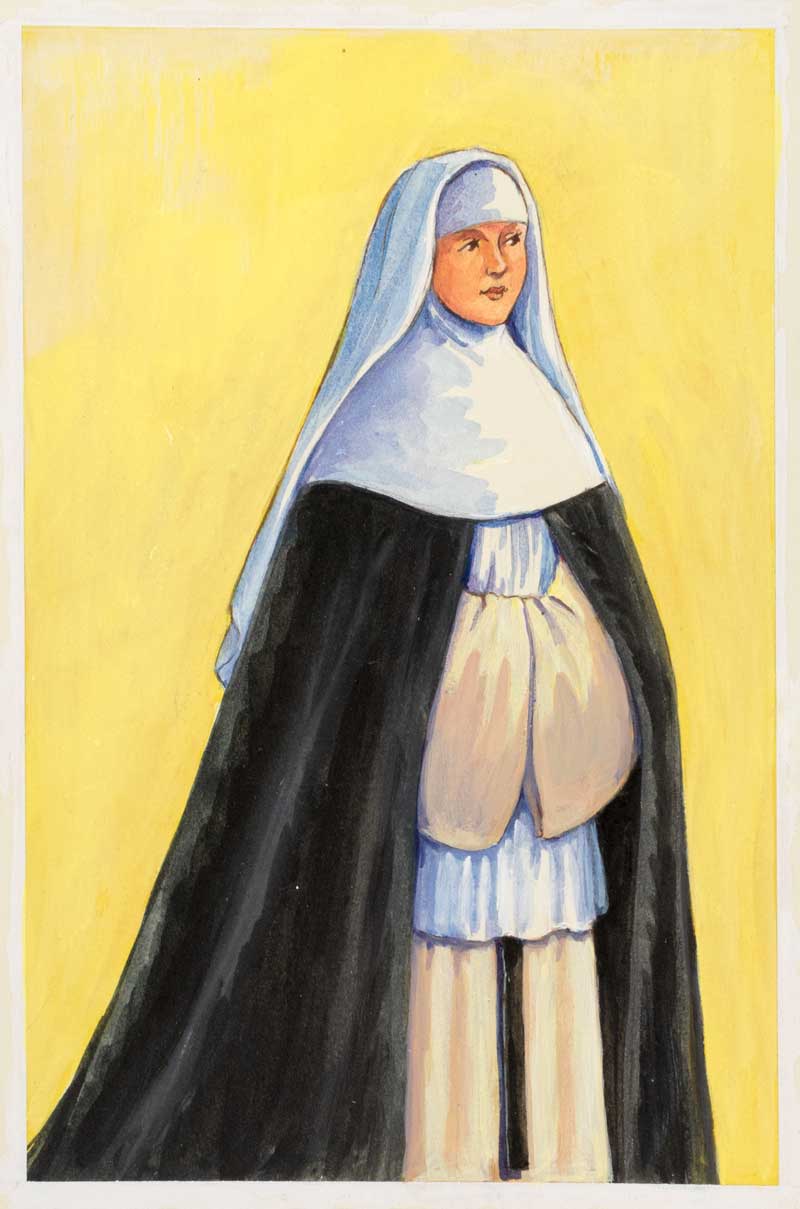
October 24: Took the habit of the Hospital Sisters under the name Catherine de Saint-Augustin.
1648
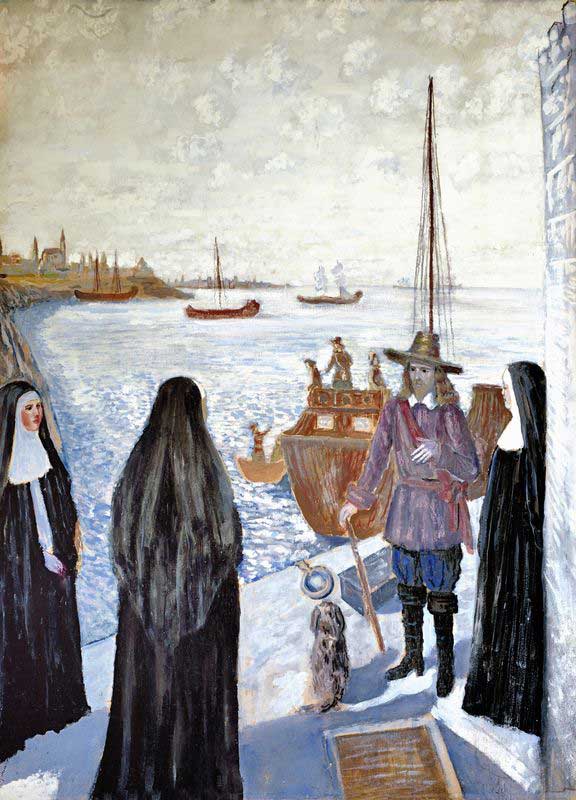
March 25: Second consecration to the Virgin Mary. May 4: On her way to the Port of La Rochelle, she pronounced her solemn vows at the Church of Notre-Dame-de-Toutes-Joies in Nantes, taking the name Marie-Catherine de Saint-Augustin.
1648
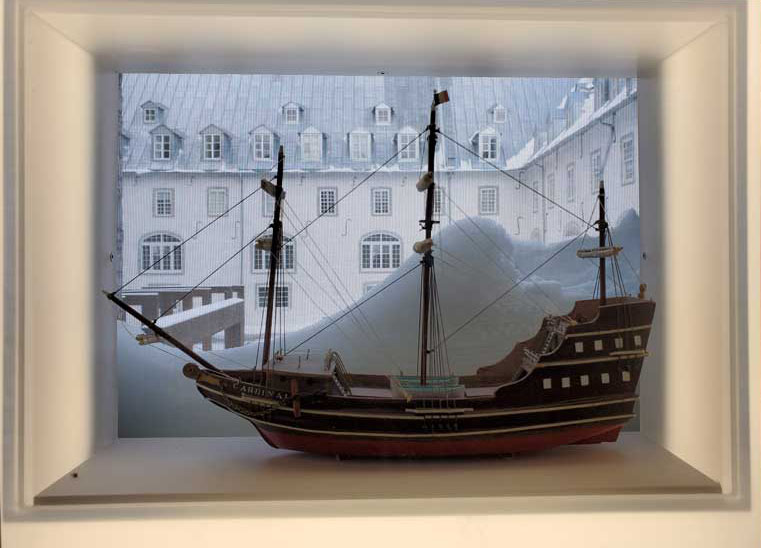
May 31: Departed from La Rochelle and arrived in Quebec on August 19.
1649
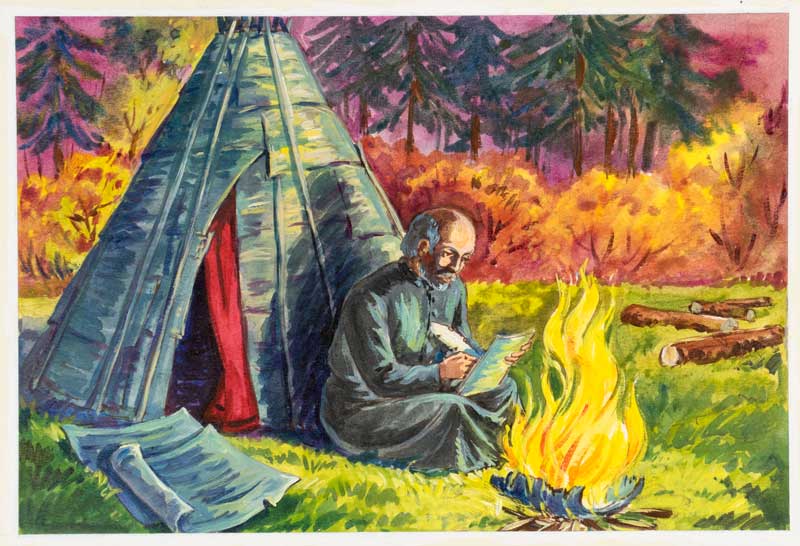
March 16: Martyrdom of Jesuit Father Jean de Brébeuf.
1654/1663
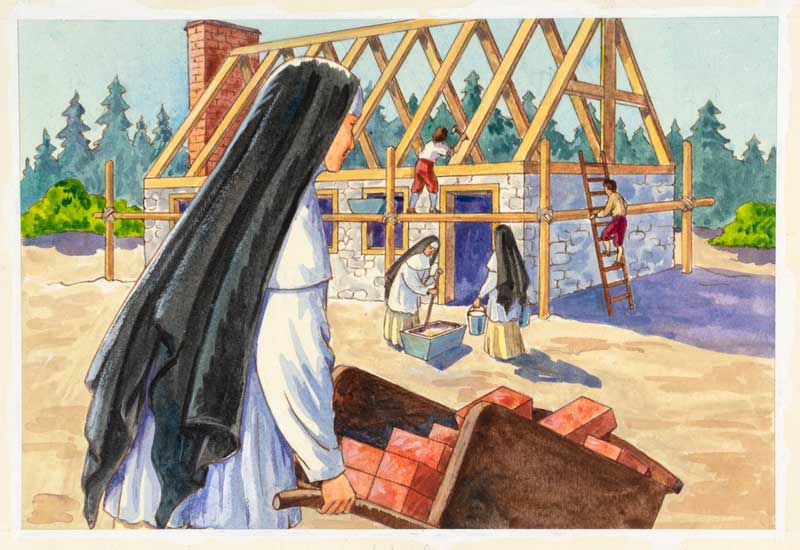
Elected successively as bursar (treasurer) and novice mistress.
1662
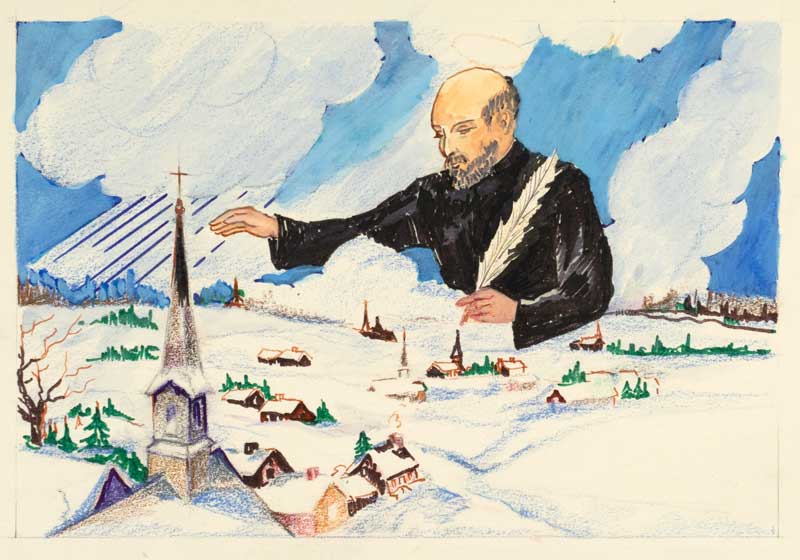
September 25: God gave her Father Jean de Brébeuf as her spiritual director in heaven.
1663
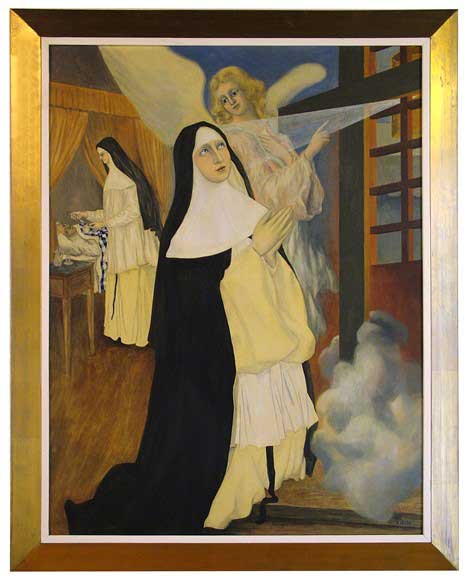
Elected first hospital superior.
1668
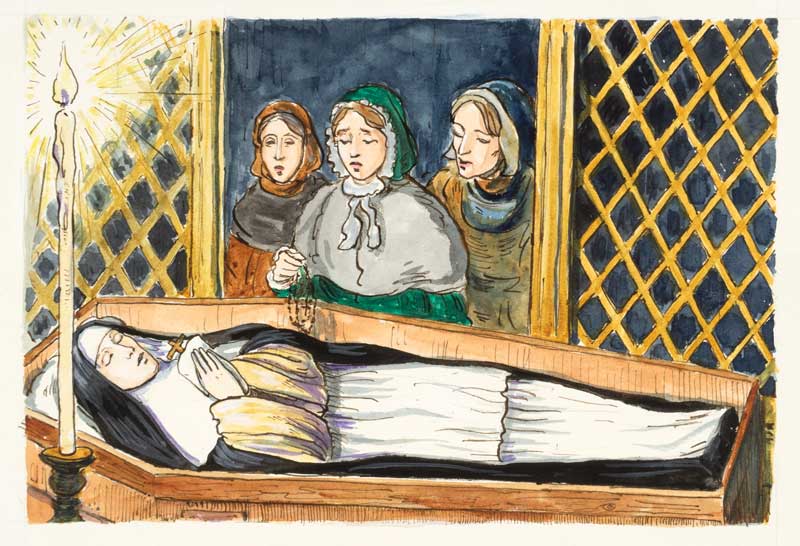
May 8 : Passed away in peace and with a great reputation for holiness at the age of 36.
1671
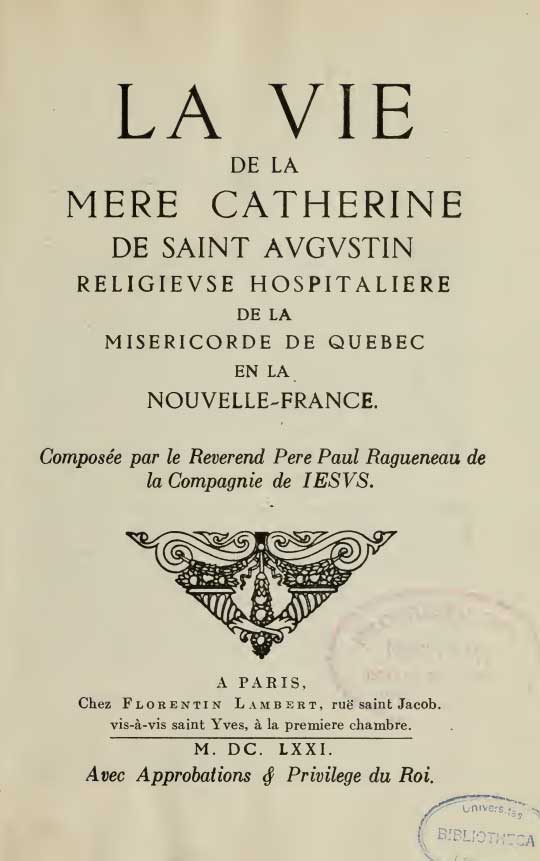
Publication of her biography by Jesuit Father Paul Ragueneau.
1689
Authorization granted by Bishop Saint-Vallier to exhume her body.
Read more...
"It was the continuation of her wonders that led us to ask, in 1689, Monseigneur de Saint-Vallier, Bishop of Quebec, for permission to exhume the body of this holy nun, to place it more suitably in a part of our house where it could be visited for devotion, which His Grace very willingly granted."
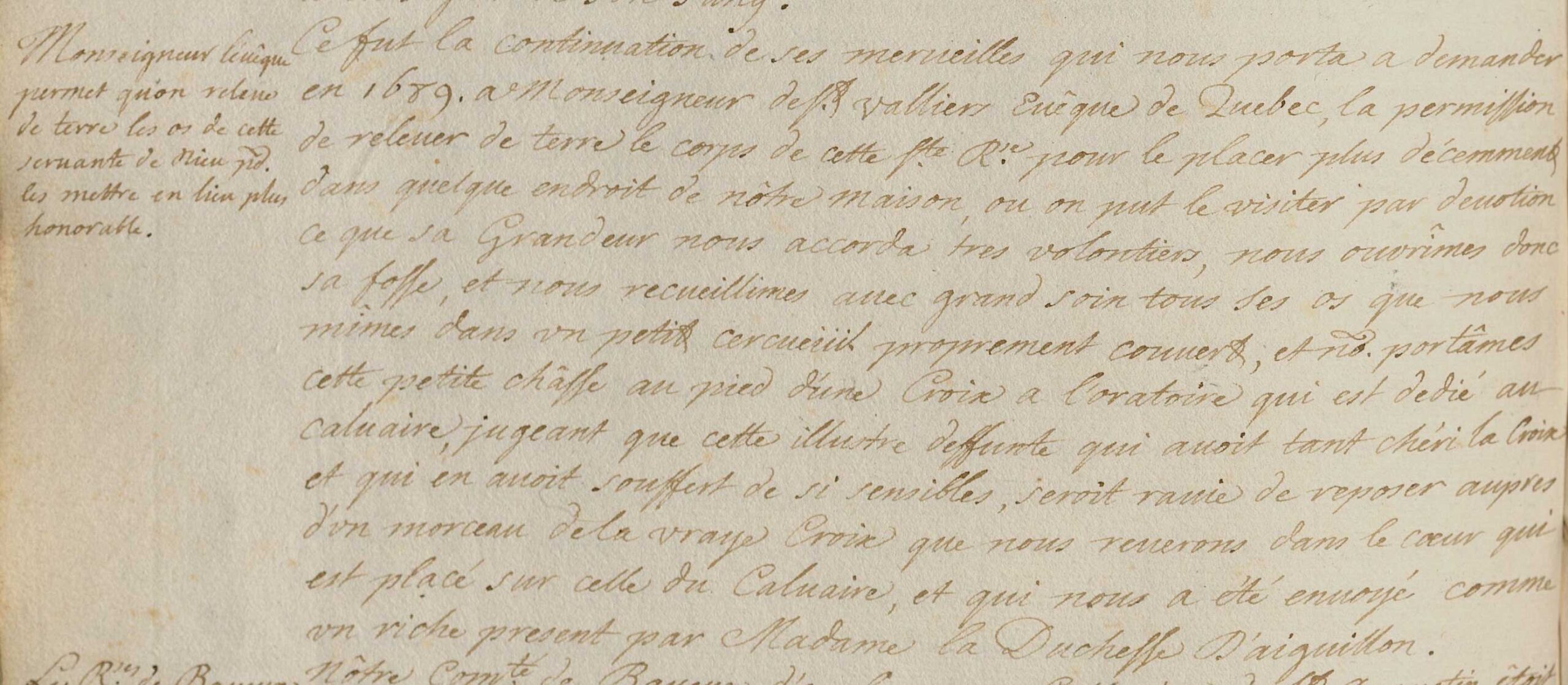
Excerpt from “Les Annales de l’Hôtel-Dieu de Québec” (1636–1716, p. 243):
1984
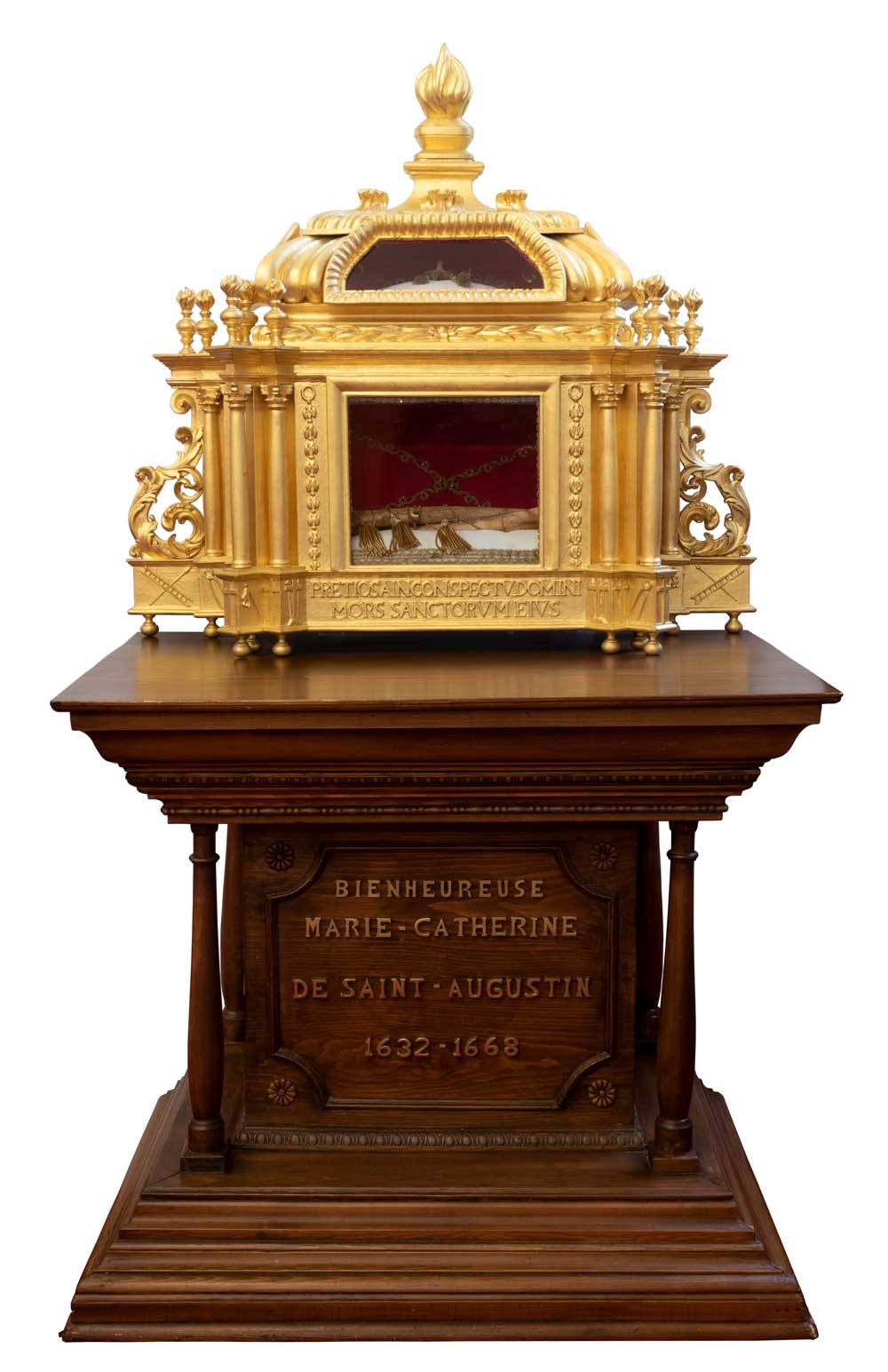
June 9: Declared Venerable by Pope John Paul II.
1989
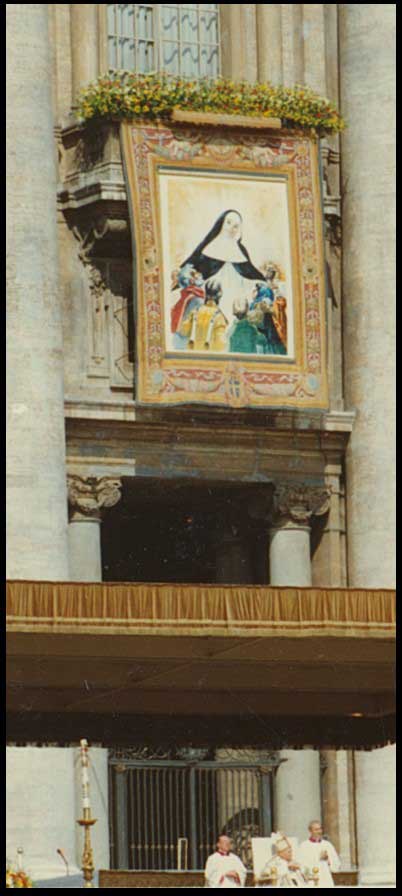
April 23: Declared Blessed by Pope John Paul II.
Since 2013
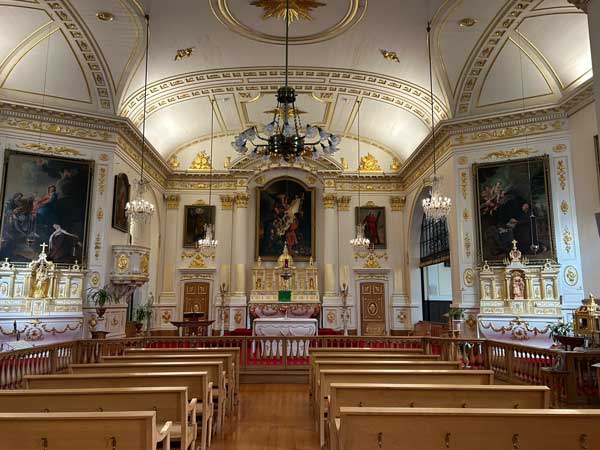
The reliquary (on the right side) containing her relics has been displayed in the historic church of the Monastery of the Augustines of the Hôtel-Dieu of Quebec.

